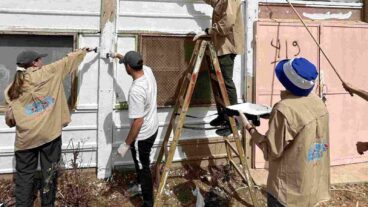If social distancing continues for a long time, social and economic stability will suffer. But what is the alternative to isolation?
Bar-Ilan University researchers, led by physicist and applied mathematician Baruch Barzel, suggest a strategy based on alternating lockdowns. The general population would be split into two groups, with each group alternating between lockdown and routine activity in weekly succession.
The combination of isolating spreaders and keeping up protective behaviors can help defeat the virus while sustaining socio-economic activity at a 50 percent level, Barzel’s group claims.
The main advantage of this strategy is that it isolates not just the sick, but also the majority of “invisible spreaders” who are presymptomatic or asymptomatic.
“Consider an individual who became infected during their active week. They are now in their pre-symptomatic period – the most dangerous stage, in which they are invisible spreaders. According to the alternating lockdown routine they are now scheduled to enter their lockdown phase,” explained Barzel.

“Staying at home for another week, they will most likely begin to exhibit symptoms, and therefore remain in isolation until full recovery. Indeed, if following a week of lockdown they show no symptoms, they are most likely uninfected and can partake in social and professional activities during their active week. Therefore, alternating lockdown with full isolation of symptomatic spreaders ensures that at all times, the majority of invisible spreaders are inactive, as their incubation period is naturally directed towards their lockdown phase.”
Barzel and team simulated the spread of COVID-19 using a mathematical model to track individuals as they transition between stages of the disease: susceptible (those available to contract the disease), exposed (those at their pre-symptomatic stage), infected (those who develop symptoms), and recovered (those who are already immune).
They found that employing their strategy – along with proper distancing and hygiene — significantly reduces the spread and helps flatten the curve.
In their simulation, the researchers found that if the proportion of “defectors” – people who continue to be active during their lockdown phase or who hold essential positions and cannot be under lockdown – is kept at under 30%, viral spread could still be overcome.
Since the results of the study were published on the Arxive,
Barzel and his team have been approached by the Israel National Security Council and international groups advising 17 different governments.
















